#Food Coating Market Growth
Explore tagged Tumblr posts
Text
The food coating ingredients market size is expected to reach USD 4.9 billion by 2028, at a CAGR of 6.2% from 2023 to 2028. Some of the most common food coating ingredients include batters, breadings, glazes, and icings.
#Food Coating Market#Food Coating#Food Coating Market Size#Food Coating Market Share#Food Coating Market Growth#Food Coating Market Trends#Food Coating Market Forecast#Food Coating Market Analysis#Food Coating Market Report#Food Coating Market Scope#Food Coating Market Overview#Food Coating Market Outlook#Food Coating Market Drivers#Food Coating Industry#Food Coating Companies
0 notes
Text
Europe Food Coating Ingredients Market Share, Size, Trends, Growth Drivers, Business Challenges, Top Key Players, Future Opportunities and Forecast 2033: SPER Market Research
Food coating ingredients are substances used in food processing to enhance the flavor, texture, appearance, and shelf life of many food products. These materials are applied to the outside of food items through methods such as breading, enrobing, or battering. Food coatings frequently contain flours, starches, proteins, lipids, sugars, and leavening agents. They serve as a barrier to prevent oil from absorbing while frying, give food a crispy or crunchy texture, prevent food from drying out, and improve appearance. Food coating ingredients can be found in fried foods like fish fillets, chicken nuggets, and potato chips, as well as baked products like doughnuts and breaded pastries.
According to SPER market research, ‘Europe Food Coating Ingredients Market Size- By Type, By Application - Regional Outlook, Competitive Strategies and Segment Forecast to 2033’ state that the Europe Food Coating Ingredients Market is predicted to reach USD XX billion by 2033 with a CAGR of 5.68%.
Drivers: The food and beverage (F&B) business has experienced significant growth, leading to an increased demand for healthy ready-to-eat (RTE) and ready-to-drink (RTD) goods. As a result, it is now simpler to use food coating components to improve the organoleptic characteristics of processed, baked, fried, and consumer items. This is one of the primary drivers of the market's present expansion. Therefore, noteworthy technological advancements like the application of electrostatic coatings, which enhance the flavor, aroma, look, and shelf life of different food items by averting chemical reactions, are additional growth-inducing factors. The introduction of antimicrobial coatings, which halt the spread of illness and keep packaged items from rotting, is another factor driving market expansion.
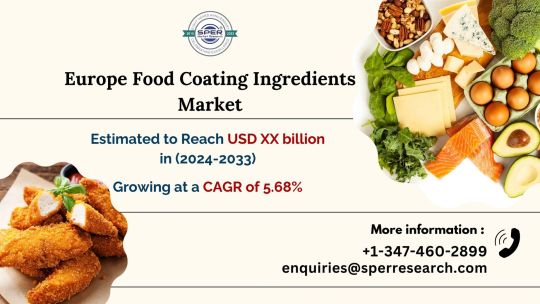
Challenges: There are multiple challenges in the market for food coating components because of various factors. Maintaining innovation to adapt to changing dietary trends and customer preferences is one of the largest challenges. Manufacturers are under pressure from consumers to reformulate their goods to offer cleaner labels, more sustainable ingredients, and healthier options. Regulations mandating strict compliance measures with regard to food safety and labeling further complicate the situation.
Request For Free Sample Report @ https://www.sperresearch.com/report-store/europe-food-coating-ingredients-market.aspx?sample=1
The COVID-19 pandemic of 2020 has a significant impact on the expansion of the food coating components business in Europe. This is because the output of food coatings decreased as a result of the closure of multiple production sites. In addition, a change in expenses was noted in the affected region as a result of these closures; for example, the cost of sugar and cocoa rose, raising the price of the product. The outcome was a change in consumer purchasing patterns for food coating materials in the European market.
Additionally, some of the market key players are Cargill Inc., Ingredion Incorporated, Kerry Group PLC, Newly Weds Foods, Royal Avebe U.A., Tate & Lyle.
Europe Food Coating Ingredients Market Segmentation:
By Type: Based on the Type, Europe Food Coating Ingredients Market is segmented as; Sugars and Syrups, Cocoa and Chocolates, Fats and Oils, Spices and Seasonings, Flours, Batter and Crumbs, Others.
By Application: Based on the Application, Europe Food Coating Ingredients Market is segmented as; Bakery, Confectionery, Breakfast Cereals, Snacks, Dairy, Meat, Others
By Region: This research also includes data for UK, France, Germany, Italy, Spain, Rest of Europe.
This study also encompasses various drivers and restraining factors of this market for the forecast period. Various growth opportunities are also discussed in the report.
For More Information, refer to below link:-
Europe Food Coating Ingredients Market Outlook
Related Reports:
Frozen Chicken Market Size- By Type, By Product, By Distribution Channel- Regional Outlook, Competitive Strategies and Segment Forecast to 2033
Europe Ready-to-Eat Food Market Size- By Type, Distribution Channel- Regional Outlook, Competitive Strategies and Segment Forecast to 2033
Follow Us –
LinkedIn | Instagram | Facebook | Twitter
Contact Us:
Sara Lopes, Business Consultant – U.S.A.
SPER Market Research
+1-347-460-2899
#Food Coating Ingredients Market#Europe Food Coating Market#Europe Food Coating Ingredients Market#Europe Food Coating Ingredients Market Analysis#Europe Food Coating Ingredients Market Challenges#Europe Food Coating Ingredients Market Competition#Europe Food Coating Ingredients Market Demand#Europe Food Coating Ingredients Market Forecast#Europe Food Coating Ingredients Market Future outlook#Europe Food Coating Ingredients Market Growth#Europe Food Coating Ingredients Market Opportunity#Europe Food Coating Ingredients Market Overview#Europe Food Coating Ingredients Market Research Report#Europe Food Coating Ingredients Market Revenue#Europe Food Coating Ingredients Market segmentation#Europe Food Coating Ingredients Market Share#Europe Food Coating Ingredients Market Size#Europe Food Coating Ingredients Market Top Industry Players#Europe Food Coating Ingredients Market Trends
0 notes
Text
Savor the Success: Food Coating Ingredients Industry Predicted to Flourish in the Next Decade
A leading player in the food industry, anticipates a groundbreaking period of growth for the Food Coating Ingredients Market from 2024 to 2032. With a finger on the pulse of culinary trends, EMR is poised to ride the wave of innovation, introducing a new era of taste experiences.
As global palates evolve and consumer demands for unique textures and flavors intensify, the Food Coating Ingredients Market is set to witness an unprecedented surge. Projections indicate a substantial increase in the adoption of advanced coating solutions, transforming ordinary dishes into extraordinary culinary delights.
Get a Sample : https://www.econmarketresearch.com/request-sample/EMR0098
Our commitment to quality and innovation places EMR at the forefront of this culinary revolution. Through extensive research and development, we are prepared to offer cutting-edge coating solutions that cater to the diverse needs of the food industry.
Flavorful Transformations: Expect an array of coating ingredients designed to enhance and complement the natural flavors of various food items, elevating the dining experience.
Health-Conscious Innovations: EMR is dedicated to delivering coatings that not only tantalize the taste buds but also align with health-conscious consumer preferences, offering guilt-free indulgence.
Global Market Domination: With an eye on expanding markets, EMR foresees establishing a significant global presence, catering to the burgeoning demand for premium food coating solutions.
Sustainable Solutions: Embracing environmental responsibility, EMR is actively developing sustainable and eco-friendly coating alternatives to contribute to a greener future.
Embark on a journey of culinary excellence with [Your Company Name]. Join us as we pave the way for a tasteful future in the Food Coating Ingredients Market from 2024 to 2032.
Read More: https://www.econmarketresearch.com/industry-report/food-coating-ingredients-market/
0 notes
Text

Attendance:
1st item: The first item I put on my picture was a crab bucket. These are used to move crabs from their traps to coolers for storage after you catch them.
2nd Item: Around 154 million Americans decorate pumpkins every year.
https://www.statista.com/statistics/922584/number-of-people-who-planned-to-carve-a-pumpkin-for-halloween-us/
3rd item: In the 17th century breadsticks were created by a man named Antonio Brunero
item 4: the double breasted was created in the 18th century and it is the most common coat used.
5th item: There are more than 8,250 greenhouse farms in use in the United States.
https://www.businesswire.com/news/home/20220819005208/en/North-America-Commercial-Greenhouse-Market-Report-2022-Rising-Populations-and-Growing-Demand-for-Food-Are-Creating-Greater-Opportunities-for-Alternative-Farming-Methods---ResearchAndMarkets.com#:~:text=According%20to%20the%20research%2C%20it,growth%20during%20the%20forecast%20period.
2 notes
·
View notes
Text
Acetic Acid Market - Forecast(2024 - 2030)
Acetic Acid Market Overview
Acetic Acid Market Size is forecast to reach $14978.6 Million by 2030, at a CAGR of 6.50% during forecast period 2024-2030. Acetic acid, also known as ethanoic acid, is a colorless organic liquid with a pungent odor. The functional group of acetic acid is methyl and it is the second simplest carboxylic acid. It is utilized as a chemical reagent in the production of many chemical compounds. The major use of acetic acid is in the manufacturing of vinyl acetate monomer, acetic anhydride, easter and vinegar. It is a significant industrial chemical and chemical reagent used in the production of photographic film, fabrics and synthetic fibers. According to the Ministry of Industry and Information Technology, from January to September 2021, the combined operating revenue of 12,557 major Chinese garment companies was US$163.9 billion, showing a 9% increase. Thus, the growth of the textile industry is propelling the market growth for Acetic Acid.
Report Coverage
The “Acetic Acid Market Report – Forecast (2024-2030)” by IndustryARC, covers an in-depth analysis of the following segments in the Acetic Acid industry.
By Form: Liquid and Solid.
By Grade: Food grade, Industrial grade, pharmaceutical grade and Others.
By Application: Vinyl Acetate Monomer, Purified Terephthalic Acid, Ethyl Acetate, Acetic Anhydride, Cellulose Acetate, Acetic Esters, Dyes, Vinegar, Photochemical and Others
By End-use Industry: Textile, Medical and Pharmaceutical, Oil and Gas, Food and Beverages, Agriculture, Household Cleaning Products, Plastics, Paints & Coating and Others.
By Geography: North America (the USA, Canada and Mexico), Europe (the UK, Germany, France, Italy, Netherlands, Spain, Russia, Belgium and the Rest of Europe), Asia-Pacific (China, Japan, India, South Korea, Australia and New Zealand, Indonesia, Taiwan, Malaysia and the Rest of APAC), South America (Brazil, Argentina, Colombia, Chile and the Rest of South America) and the Rest of the World (the Middle East and Africa).
Request Sample
Key Takeaways
The notable use of Acetic Acid in the food and beverages segment is expected to provide a significant growth opportunity to increase the Acetic Acid Market size in the coming years. As per the US Food and Agriculture Organization, world meat production reached 337 million tonnes in 2019, up by 44% from 2000.
The notable demand for vinyl acetate monomer in a range of industries such as textile finishes, plastics, paints and adhesives is driving the growth of the Acetic Acid Market.
Increase in demand for vinegar in the food industry is expected to provide substantial growth opportunities for the industry players in the near future in the Acetic Acid industry.
Acetic Acid Market Segment Analysis – by Application
The vinyl acetate monomer segment held a massive 44% share of the Acetic Acid Market share in 2021. Acetic acid is an important carboxylic acid and is utilized in the preparation of metal acetates and printing processes, industrially. For industrial purposes, acetic acid is manufactured by air oxidation of acetaldehyde with the oxidation of ethanol, butane and butene. Acetic acid is extensively used to produce vinyl acetate which is further used in formulating polyvinyl acetate. Polyvinyl acetate is employed in the manufacturing of plastics, paints, textile finishes and adhesives. Thus, several benefits associated with the use of vinyl acetate monomer is boosting the growth and is expected to account for a significant share of the Acetic Acid Market.
Inquiry Before Buying
Acetic Acid Market Segment Analysis – by End-use Industry
The food and beverages segment is expected to grow at the fastest CAGR of 7.5% during the forecast period in the Acetic Acid Market. Acetic Acid is also known as ethanoic acid and is most extensively used in the production of vinyl acetate monomer. Vinyl acetate is largely used in the production of cellulose acetate which is further used in several industrial usage such as textiles, photographic films, solvents for resins, paints and organic esters. PET bottles are manufactured using acetic acid and are further utilized as food containers and beverage bottles. In food processing plants, acetic acid is largely used as cleaning and disinfecting products. Acetic acid is extensively used in producing vinegar which is widely used as a food additive in condiments and the pickling of vegetables. According to National Restaurant Association, the foodservice industry is forecasted to reach US$898 billion by 2022. Thus, the advances in the food and beverages industry are boosting the growth of the Acetic Acid Market.
Acetic Acid Market Segment Analysis – by Geography
Asia-Pacific held a massive 41% share of the Acetic Acid Market in 2021. This growth is mainly attributed to the presence of numerous end-use industries such as textile, food and beverages, agriculture, household cleaning products, plastics and paints & coatings. Growth in urbanization and an increase in disposable income in this region have further boosted the industrial growth in this region. Acetic acid is extensively used in the production of metal acetates, vinyl acetate and vinegar which are further utilized in several end-use industries. Also, Asia-Pacific is one of the major regions in the domain of plastic production which provides substantial growth opportunities for the companies in the region. According to Plastic Europe, China accounted for 32% of the world's plastic production. Thus, the significant growth in several end-use industries in this region is also boosting the growth of the Acetic Acid Market.
Acetic Acid Market Drivers
Growth in the textile industry:
Acetic Acid, also known as ethanoic acid, is widely used in the production of metal acetate and vinyl acetate which are further used in the production of chemical reagents in textiles, photographic films, paints and volatile organic esters. In the textile industry, acetic acid is widely used in textile printing and dyes. According to China’s Ministry of Industry and Information Technology, in 2020, textile and garment exports from China increased by 9.6% to US$291.22 billion. Also, according to the U.S. Department of Commerce, from January to September 2021, apparel exports increased by 28.94% to US$4.385 billion, while textile mill products rose by 17.31% to US$12.365 billion. Vinyl acetate monomer is utilized in the textile industry to produce synthetic fibers. Thus, the global growth in demand for textiles is propelling the growth and is expected to account for a significant share of the Acetic Acid Market size.
Schedule a call
Surge in use of vinegar in the food industry:
The rapid surge in population along with the adoption of a healthy and sustainable diet has resulted in an increase in demand for food items, thereby increasing the global production level of food items. As per US Food and Agriculture Organization, in 2019, global fruit production went up to 883 million tonnes, showing an increase of 54% from 2000, while global vegetable production was 1128 million tonnes, showing an increase of 65%. Furthermore, world meat production reached 337 million tonnes in 2019, showing an increase of 44% from 2000. Acetic acid is majorly used in the preparation of vinegar which is further widely utilized as a food ingredient and in personal care products. Vinegar is used in pickling liquids, marinades and salad dressings. It also helps to reduce salmonella contamination in meat and poultry products. Furthermore, acetic acid and its sodium salts are used as a food preservative. Thus, the surge in the use of vinegar in the food industry is boosting the growth of the Acetic Acid Market.
Acetic Acid Market Challenge
Adverse impact of acetic acid on human health:
Acetic Acid is considered a strong irritant to the eye, skin and mucous membrane. Prolong exposure to and inhalation of acetic acid may cause irritation to the nose, eyes and throat and can also damage the lungs. The workers who are exposed to acetic acid for more than two or three years have witnessed upper respiratory tract irritation, conjunctival irritation and hyperkeratotic dermatitis. The Occupational Safety and Health Administration (OSHA) reveals that the standard exposure to airborne acetic acid is eight hours. Furthermore, a common product of acetic acid i.e., vinegar can cause gastrointestinal tract inflammatory conditions such as indigestion on excess consumption. Thus, the adverse impact of Acetic Acid may hamper the market growth.
Buy Now
Acetic Acid Industry Outlook
The top 10 companies in the Acetic Acid Market are:
Celanese Corporation
Eastman Chemical Company
LyondellBasell
British Petroleum
Helm AG
Pentoky Organy
Dow Chemicals
Indian Oil Corporation
Daicel Corporation
Jiangsu Sopo (Group) Co. Ltd.
Recent Developments
In March 2021, Celanese Corporation announced the investment to expand the production facility of vinyl portfolio for the company’s acetyl chain and derivatives in Europe and Asia.
In April 2020, Celanese Corporation delayed the construction of its new acetic acid plant and expansion of its methanol production by 18 months at the Clear Lake site in Texas.
In October 2019, BP and Chian’s Zhejiang Petroleum and Chemical Corporation signed MOU in order to create a joint venture to build a 1 million tonne per annum Acetic Acid plant in eastern China.
Key Market Players:
The Top 5 companies in the Acetic Acid Market are:
Celanese Corporation
Ineos Group Limited
Eastman Chemical Company
LyondellBasell Industries N.V.
Helm AG
For more Chemicals and Materials Market reports, please click here
#Acetic Acid Market#Acetic Acid Market Share#Acetic Acid Market Size#Acetic Acid Market Forecast#Acetic Acid Market Report#Acetic Acid Market Growth
2 notes
·
View notes
Text
Throat Lozenges: Alleviating Sore Throats New Findings Offer Promising Relief
What are Throat Lozenges?
Cough drop are medicated candy-like tablets that are designed to provide quick relief to coughs or sore throats. They dissolve slowly in the mouth, allowing the ingredients to coat and soothe the throat. Key Ingredients in Throat Lozenges
Throat Lozenges generally contain one or more of the following active ingredients that work to relieve throat irritation : Anesthetics - Such as benzocaine or phenol aid in numbing throat pain. They work topically to reduce throat sensitivity. Anti-inflammatory Agents - Like menthol or eucalyptus oil work by reducing inflammation. They promote mucus drainage to clear congestion. Demulcents - Materials like honey or glycerin coat the throat lining. They protect it from further irritation when swallowing or coughing. Antibiotics - Lozenges containing tetracycline are occasionally prescribed for bacterial throat infections. They treat specific infections. How do Throat Lozenges Work?
When a throat lozenge dissolves in the mouth, its active ingredients are released. They coat and numb the throat, reducing discomfort. Specific ingredients may also reduce swelling or treat infections : - Anesthetics temporarily numb painful areas, blocking throat pain signals. - Anti-inflammatory agents decrease swelling in irritated throat tissues. This lessens pain. - Demulcents form a protective film over inflamed areas, shielding them from further irritation. - Antibiotics kill or limit bacterial growth if a strep throat is present. This resolves the underlying cause. The slow dissolving nature also allows the throat to be continuously coated for 30-60 minutes, enhancing relief during that period. Using Cough drop Effectively
For best results, cough drop should be used as per product instructions. Some general tips on their effective use include: - Allow the lozenge to dissolve slowly in the mouth, rather than chewing or swallowing it whole. This ensures maximum coating of the throat. - Suck on the lozenge for at least 15-20 minutes for the ingredients to take maximum effect before swallowing any remnants. - Use lozenges at the first signs of a sore throat, rather than waiting for severe pain. Early action provides prompt symptom relief. - Lozenges work best for recently developed throat irritations. See a doctor for persistent or worsening pain. - Drink plenty of fluids while using lozenges to keep the throat moist. Water is recommended over acidic juices. - Lozenges containing local anesthetics provide temporary pain relief. Seek medical help if symptoms persist beyond a few days. Popular Throat Lozenge Brands
Some globally recognized throat lozenge brands offering effective temporary relief include: - Halls: Known for its menthol and eucalyptus flavors, it soothes and fights germs. - Strepsils: Contains phenol as an active ingredient. It aims to relieve pain from streptococcal sore throats. - Thayers: A honey-based lozenge brand formulated to moisturize and protect the throat naturally. - Chloraseptic: Branded lozenges utilizing benzocaine as an oral anesthetic to numb throat pain. - Cough Drops: A variety of flavored cough drop and drops by Ricola and Fishermans Friend. - Biotene: Specialized lozenges and mouthwashes for dry mouth relief alongside sore throat symptoms. In Summary, cough drop are widely available over-the-counter at pharmacies. They offer a convenient, drug-free way to temporarily relieve common throat afflictions. Using them properly under medical guidance helps maximize symptom comfort.
Get More Insights On - Throat Lozenges
Discover the Report for More Insights, Tailored to Your Language.
French
German
Italian
Russian
Japanese
Chinese
Korean
Portuguese
About Author:
Ravina Pandya, Content Writer, has a strong foothold in the market research industry. She specializes in writing well-researched articles from different industries, including food and beverages, information and technology, healthcare, chemical and materials, etc. (https://www.linkedin.com/in/ravina-pandya-1a3984191)

#Throat Lozenges Comfort#Throat Lozenges Herbal Remedies#Throat Lozenges Pain Relief#Throat Lozenges Fast-Acting#Throat Lozenges sore throat relief
3 notes
·
View notes
Text
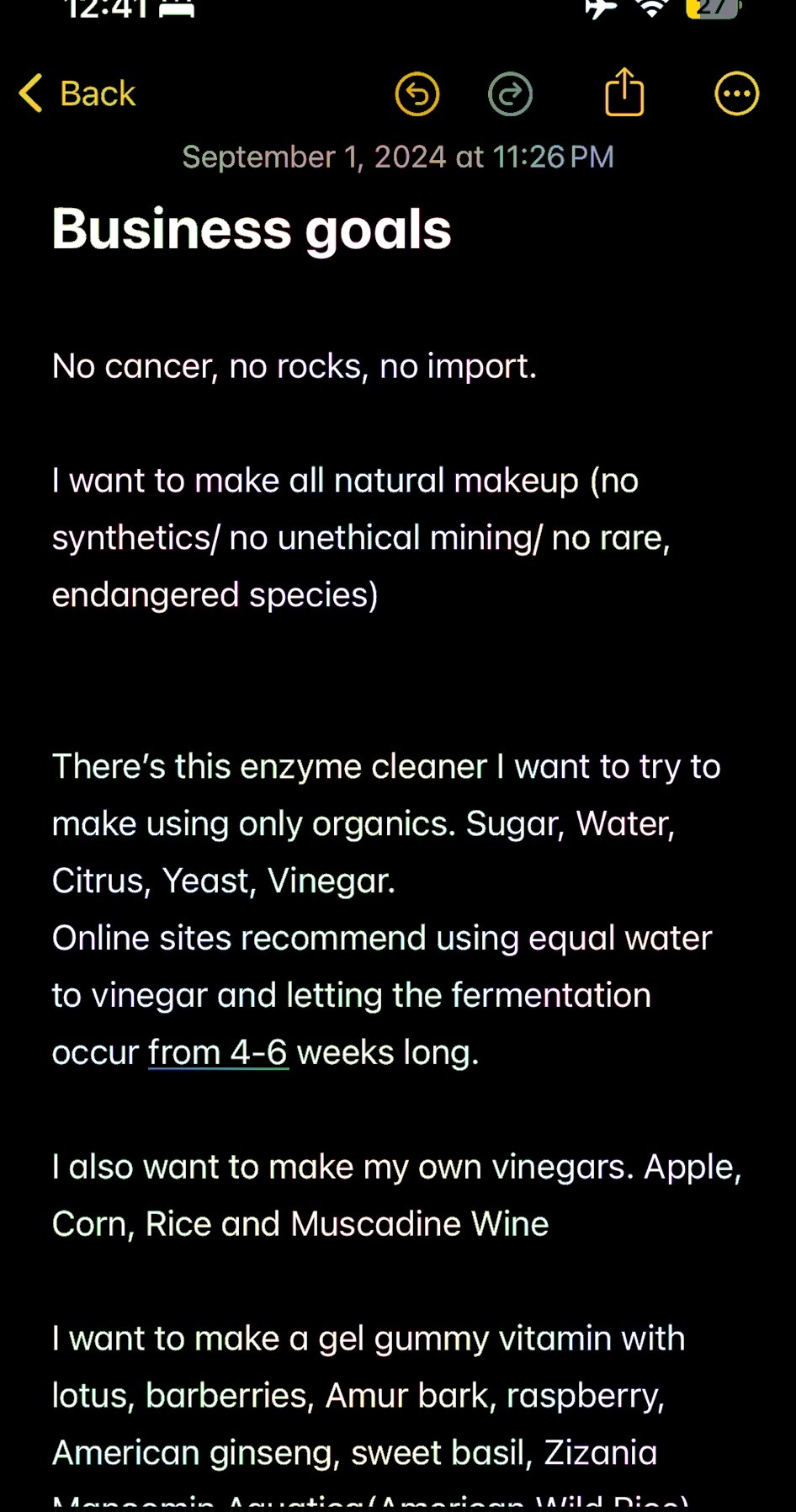
So, here’s just an idea for a product I’m thinking of making and I’m trying to market it all before I launch so my content doesn’t miss any of my niche audience but, honestly I think I might be the only swampy Central Floridian witch obsessed with botany and sustainable aqua and agriculture aspiring for financial freedom attempting to acquire all that through business savvy… anyway this is a blog so let me tell you about the business I’m starting then afterwards I’ll shut up and go to bed.
Natural Alternatives to Mainstream Synthetics.
I’m not a fan of synthetic products, pollution or elitism and awhile back I started learning about how these things decay and affect the planet and people. Synthetic materials used in topicals, food, and cosmetics can disrupt the endocrine system, your metabolism and autoimmune system, and endanger our natural world. I believe synthetic fabrications can be formulated holistically however, until now, are not truly understood and should be replaced with sustainable organic materials that come to us from the natural world.
We’re using candles that are made with verifiably known carcinogens, the homes are being built and coated with harmful substances, inorganic plastics and breathable toxins …
I want to make something old …
I want to reach back into the ancient world and pull out a pristine and holy technology : creation for the sake of eternal benefit.
Too much harm has been done, and, now it is time- for the world’s healing. I believe that begins with our lifestyles.
Humans are meant to live in supreme seasons of harvest, hibernation, and, growth. I refuse to be driven mad in the fray of other people’s lives. Does the tortoise who flows with their intuition lose to the hustling hare?
Beauty should not come at the cost of your wealth, self, or, health and the aspiration of it should be an effect of the benefit of improving your health.
Infrastructure and culture should be in balance with the desires of the earth to sustain us. Do not build golf courses through a flood-plain. Stop developing without green space! If I see one more beer cooler full of cans when I’m kayaking in any of Florida’s beautiful rivers I will EMAIL EVERYONEEEEEE!!!
Donate to @thenatureconservancychina to aid the defense of the earth and our ecology.
Prepare for @iotlorganicscompany launch Spring 2025

#free palestine#stop war#heal the world#organic#oppose deforestation#florida#central florida#southwest florida#small business#charitable donations#hippie#python#snake venom#lotus#nelumbo lutea#rant post#beauty#decor#transgender#trans#entrepreneur
2 notes
·
View notes
Text
Duplex Board Paper Manufacturer

Duplex paper board, also known as duplex board, is a type of paperboard or cardboard that is widely used for packaging and printing purposes. It is made by combining two layers of paper, typically made from recycled fibers, with a layer of adhesive in between. This results in a material that is strong, durable, and versatile, making it suitable for a wide range of applications.
In India, the manufacture of duplex paper board has been growing steadily in recent years. The country has seen an increase in demand for packaging materials due to the booming e-commerce industry, as well as the growth of various other industries such as food and beverage, pharmaceuticals, and consumer goods. This has led to a greater need for high-quality packaging materials, including duplex paper board.
One of the key advantages of duplex paper board is its strength and rigidity, which makes it ideal for packaging heavy or fragile items. It also provides a smooth and consistent surface for printing, making it suitable for a wide range of printing and graphic applications. Additionally, duplex paper board is often coated to improve its surface properties, such as smoothness and gloss, further enhancing its suitability for printing and packaging.
The manufacture of duplex paper board in India involves several key processes, including pulping, refining, blending, and coating. The raw materials used in the production of duplex paper board are typically sourced from recycled paper and cardboard, making it an environmentally friendly choice. The manufacturing process also involves the use of advanced machinery and technology to ensure the consistent quality of the final product.
In recent years, the Indian government has also been promoting the use of eco-friendly and sustainable packaging materials, which has further contributed to the growth of the duplex paper board industry in the country. This has led to an increased focus on using renewable resources and reducing the environmental impact of packaging materials, making duplex paper board an attractive option for businesses looking to align with these sustainability goals.
With its strength, versatility, and environmental benefits, duplex paper board is well-positioned to continue being a key player in the packaging and printing industry in India. As the market continues to evolve, it is expected that the manufacture of duplex paper board will continue to thrive and contribute to the country's growing economy.
2 notes
·
View notes
Text
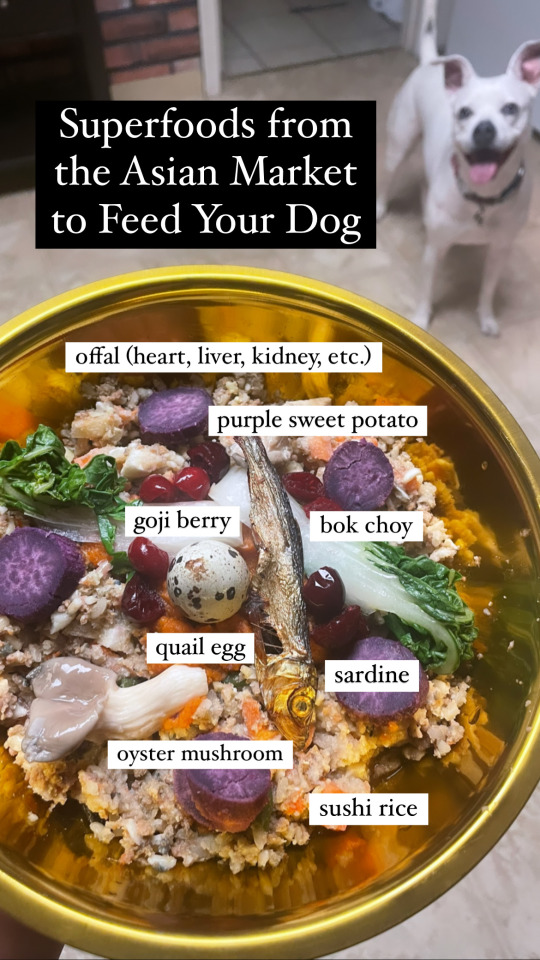
These past few years, I have become a huge advocate for feeding fresh food to dogs to enhance their lives. However, you don't exactly have to transition your dog to a 100% fresh food diet in order to gain the benefits of fresh food.
Simply adding fresh food to your dog's kibble can go a long way in improving their nutrition and overall health. For instance, one study done a group of dogs in 2005 revealed that feeding vegetables just three times a week had significantly lowered their risk of developing cancer, compared to dogs who were only fed kibble.
Asian markets, in particular, have some very beneficial fresh food items that aren't typically found at your local grocery store. These food items, however, are not intended to fully replace your dog's food. Remember - too much of something good can be bad for you.
Instead, they should be offered in moderation as treats, or just small amounts topped over an already complete and balance meal. As a general rule of thumb, treats/toppers should never make more than 10% of your dog's overall diet.
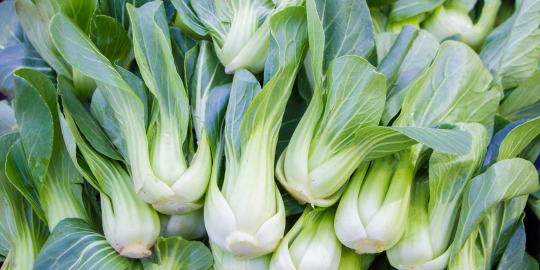
Bok choy (Chinese cabbage) is full of essential vitamins and minerals needed to support a dog’s eyesight, cardiac function, digestion, bone strength, and immunity. Sulfurophane - a compound found in bok choy and other cruciferous vegetables - has been linked to inhibiting cancer cell growth, lowering blood pressure, and activating the nuclear factor Nrf2 which prevents the development of diabetes and its complications. Bok choy’s low calorie, high fiber content also make it a good option for a snack/food topper for dogs who need to control their weight.
Preparation: Lightly steam or boil for better nutrient absorption. Cooking will also help neutralize the enzyme (myrosinase) that can decrease thyroid function. You should also chop/trim their long leaves to avoid choking hazards.
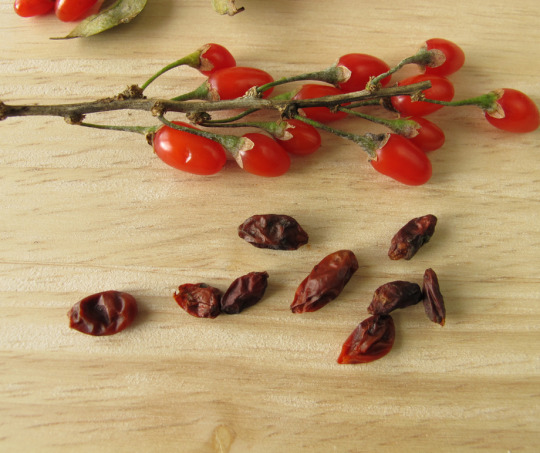
Goji berries (wolfberries) are rich in amino acids, carotenoids which support healthy vision, and polyphenols that have anti-inflammatory, anti-tumor, and cardio-protective properties. Studies on goji berry supplementation in animals have shown that it has the potential to help lower cholesterol, protect the liver by increasing hepatic antioxidant activity, as well as enhance metabolic homeostasis and prevent diabetes-induced renal inflammation.
Preparation: Remove stems if still attached and cut/mash berries. If dried, soak in water until softened to avoid passing straight through the GI tract and losing the benefits of its nutrients.

Offal refers to the internal organs and variety meats of animals that can be consumed as food (i.e. lung, heart, kidney, liver, gizzard, head, feet, etc.) The word 'offal' literally translates to "fall off", and thus, whatever falls off the skeleton during the butchering process. Offal is densely loaded with essential vitamins, minerals, proteins, and fats - so small amounts go a long way. Pet owners who use these as ingredients as part of a complete and balanced recipe should keep in mind that each organ is unique in its nutrient profile - dependent on the animal it is sourced from and how it is raised. For example, grass-fed beef may contain less fat yet more vitamin A and E than grain-fed beef, and beef liver has significantly more vitamin A and copper than chicken liver.
Preparation: Boil in water or low-sodium broth. May also be baked or dehydrated into jerky treats.

Oyster mushrooms are a good source of protein and fiber, and vitamins that support healthy digestion. They can help to increase satiety and maintain healthy body weight. Oyster mushrooms are also full of pantothenic acid which help to maintain cognitive function and healthy skin/coat. Beta-glucans derived from oyster mushrooms have also been shown to reduce inflammation and strengthen immunity.
Preparation: Lightly sauté or boil in water or low-sodium broth. Raw or dried mushrooms can be difficult for dogs to digest.

Purple sweet potato (Ube or Okinawan sweet potato) are typically found in grocery stores more commonly during the fall/winter seasons. They contain more antioxidants than regular sweet potatoes due to the anthocyanins that cause their violet hue. While all potato varieties may impact blood sugar levels because of their high carbohydrate content, purple potatoes may exert less of an effect because of their high polyphenol content that decreases the absorption of starches in the intestines. In addition, they have been linked to improving blood pressure, likely due to their high potassium content.
Preparation: Peel skin and bake until soft for better digestibility and to prevent intestinal blockages. May be boiled and drained to reduce oxalate intake for dogs with a history of bladder stones, or prone to urinary issues.
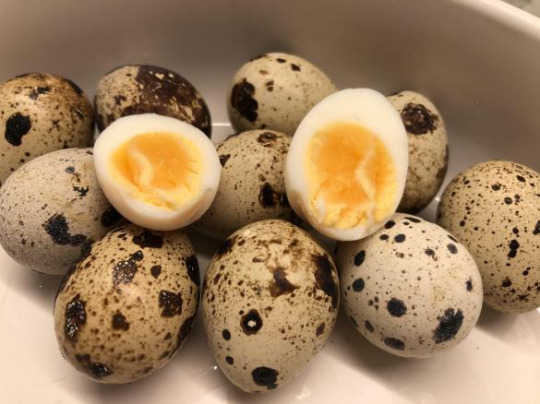
Quail eggs are small, yet packed with protein and essential fatty acids, and have a higher ratio of iron, riboflavin, and vitamin b12 than chicken eggs. It is even safe and can be beneficial to feed them with the shells included for added calcium. Quail eggs have been linked to improving bone growth/healing, reducing liver damage, and increasing energy levels. While some studies have shown evidence of quail eggs treating allergies in humans and mice, they may be less likely to trigger reactions than chicken eggs in dogs who have poultry sensitivities.
Preparation: Wash thoroughly, and handle gently as they are more fragile due to their tiny size. Cooking methods are similar to that of chicken eggs, yet require less time.

Sardines contain all the amino acids your dog needs for optimal health, making it a "complete protein". They are also notorious for being rich in omegas and coenzyme q-10, which help support heart and brain health. What sets sardines apart from other fish, too, is that they are smaller and more short-lived species than larger predator fish and may have less of a risk for mercury poisoning. Because they are so small and have soft bones, you can feed them whole to your pets.
Preparation: Bake or dehydrate. If already purchased as dried, be sure to make sure there is no added salt or seasonings. If canned, preferably those stored in water only.

Sushi rice (Japanese sticky rice) has a high proportion of starch and moisture, giving it a stickier texture when cooked. Sushi rice has virtually zero fat, yet still provides a desirable balance of nutrients while remaining gentle on a dog’s digestive tract. Its higher iron content than regular rice supports healthy blood circulation and can provide more energy to dogs who are recovering from illness. Cooling/refrigerating the rice before serving also enables more retrogradation of prebiotic fiber, helping to lower glycemic responses and maximize intestinal function.
Preparation: Rinse thoroughly and soak in water (with 1tbsp apple cider vinegar - optional) before cooking. If you don’t have a rice cooker or instant pot, boil on the stove until the water is completely absorbed. May be cooked with bone broth for added flavor. You can also use small amounts of beet root powder, turmeric, or blue spirulina to add color and nutrients.
#asian markets#pet food#dog treats#bok choy#goji berries#offal#oyster mushrooms#quail eggs#sardines#sushi rice#purple sweet potato
9 notes
·
View notes
Text
Melamine Market is Expected to Grow at a CAGR of 3.87% during the forecast period until 2032

The melamine market has witnessed remarkable growth and diversification in recent years, propelled by a myriad of factors shaping the global landscape. Melamine, a nitrogen-rich organic compound, finds extensive applications across various industries, including construction, automotive, textiles, packaging, and food service. Its unique properties, such as high flame resistance, thermal stability, durability, and chemical inertness, have made melamine a versatile and indispensable material in numerous manufacturing processes and end-use applications.
One of the primary drivers of the melamine market is the increasing demand from the construction industry. Melamine-based products, such as melamine formaldehyde resins and melamine foam insulation, are widely used in construction applications such as laminates, decorative panels, flooring, countertops, and insulation materials. With rapid urbanization, infrastructure development, and construction activities on the rise globally, the demand for melamine-based construction materials is expected to surge.
Read Full Report: https://www.chemanalyst.com/industry-report/melamine-market-812
Moreover, the automotive sector represents another significant market for melamine, driven by the increasing demand for lightweight, durable, and aesthetically appealing materials. Melamine-based components, such as automotive interior trim, dashboard panels, door panels, and decorative parts, offer excellent properties such as scratch resistance, color stability, and surface finish, thereby enhancing the overall aesthetics and functionality of vehicles. As automotive manufacturers focus on improving fuel efficiency, reducing emissions, and enhancing passenger comfort and safety, the demand for melamine-based automotive materials is projected to grow substantially.
Furthermore, the textiles industry presents lucrative opportunities for the melamine market, particularly in the manufacturing of melamine-formaldehyde resins for textile finishing and coating applications. Melamine resins impart crease resistance, wrinkle resistance, and color fastness to textiles, thereby enhancing their durability, appearance, and performance. With the growing demand for high-quality textiles, home furnishings, and apparel, the demand for melamine-based textile additives is expected to increase.
Additionally, the packaging industry represents a significant market for melamine, driven by the rising demand for lightweight, durable, and eco-friendly packaging materials. Melamine-based products, such as melamine-formaldehyde resins and melamine foam packaging, offer excellent properties such as thermal insulation, moisture resistance, and shock absorption, making them ideal for packaging applications such as food packaging, electronics packaging, and industrial packaging. As consumers increasingly prioritize sustainability, recyclability, and environmental friendliness, the demand for melamine-based packaging solutions is expected to grow.
Despite the promising outlook, the melamine market faces challenges and constraints, including fluctuating raw material prices, regulatory compliance issues, and environmental concerns related to formaldehyde emissions. However, industry stakeholders are actively addressing these challenges through initiatives focused on product innovation, sustainability, and regulatory compliance. Moreover, strategic partnerships, mergers, and acquisitions are driving consolidation and market expansion in the melamine industry.
In conclusion, the melamine market is poised for continued growth and innovation, driven by its versatile applications, inherent properties, and compatibility with evolving market trends. By leveraging its strengths in construction, automotive, textiles, packaging, and other sectors, the melamine market can navigate towards a more sustainable and prosperous future, ensuring its relevance and competitiveness in the global marketplace.
About us:
ChemAnalyst is an online platform offering a comprehensive range of market analysis and pricing services, as well as up-to-date news and deals from the chemical and petrochemical industry, globally.
Being awarded ‘The Product Innovator of the Year, 2023’, ChemAnalyst is an indispensable tool for navigating the risks of today's ever-changing chemicals market.
The platform helps companies strategize and formulate their chemical procurement by tracking real time prices of more than 400 chemicals in more than 25 countries.
ChemAnalyst also provides market analysis for more than 1000 chemical commodities covering multifaceted parameters including Production, Demand, Supply, Plant Operating Rate, Imports, Exports, and much more. The users will not only be able to analyse historical data but will also get to inspect detailed forecasts for upto 10 years. With access to local field teams, the company provides high-quality, reliable market analysis data for more than 40 countries.
Contact us:
420 Lexington Avenue, Suite 300
New York, NY
United States, 10170
Email-id: [email protected]
Mobile no: +1-3322586602
#Melamine#Melaminemarket#Melaminemarketsize#Melaminemarkettrends#Melaminemarketgrowth#Melaminemarketshare#Melaminedemand
2 notes
·
View notes
Text
Food Coating MarketGrowth by Emerging Trends, Analysis, & Forecast
The food coating ingredients market is estimated at USD 3.6 billion in 2023 and is projected to reach USD 4.9 billion by 2028, at a CAGR of 6.2% from 2023 to 2028. The food coating equipment market is estimated at USD 5.7 billion in 2023 and is projected to reach USD 7.7 billion by 2028, at a CAGR of 6.3% from 2023 to 2028. Food coating refers to the process of adding a layer of coating or breading to food products, which can provide improved texture, taste, appearance, and preservation. The market for food coating is driven by several factors, including the growing demand for convenience and processed food products, increasing consumer preferences for crispy and crunchy food textures, and the need for extended shelf life of packaged food. The demand for convenience food products, such as frozen and ready-to-eat meals, has been on the rise. Food coatings are used to enhance the taste and texture of these products, thereby driving the market growth. The food coating equipment market is steadily increasing in North America and Europe and growing consistently due to established equipment manufacturers and the organized food industry.

Download PDF Brochure: https://www.marketsandmarkets.com/pdfdownloadNew.asp?id=168532529
Based on Application, the meat & seafood products sub segment of the food coating ingredient market is anticipated to dominate the market.
Commonly used ingredient for the coating of meat & seafood products is flour, which helps to provide appealing colors and flavors. Different coatings are applied to the surface of meat loaves, sausages, and other meat food products. Both fresh and frozen types of meat, when subjected to extended storage, lose substantial water due to evaporation. It is desirable to have the meatloaves coated as the coating lends protection to the product and gives it more appealing organoleptic characteristics.
Based on application, the confectionery products is projected to witness the highest CAGR in food coating equipment market during the forecast period.
There has been a rising demand for confectionery products in the European region, which presents a mature market for the confectionery industry. Hence, this region is expected to show slow growth as compared to other regions. Confectionery is generally high in calories and carbohydrates but poor in micronutrients. Industry statistics show that, in terms of sales generated, the Western European region dominated the worldwide confectionery sector. Better-for-you products have become more popular as a response to health issues. The clean label movement has impacted the confectionery market because of the demand for colors that are derived naturally. Many food firms announced plans to reformulate their products to swap out artificial additives and streamline ingredient lists to meet this growing demand. Few companies have made acquisitions, with companies having a strong bakery processing equipment portfolio to enhance their product as well. Gea Group (Germany) has firmly moved into the bakery sector with the acquisition of Comas and Imaforni, the leading suppliers of demanding industrial processing equipment and solutions for the cakes, pies, cookies and biscuits, crackers, and snacks industry.
Request Sample Pages: https://www.marketsandmarkets.com/requestsampleNew.asp?id=168532529
The Asia Pacific market is projected to dominate the food coating equipment market.
The region’s growing demand for processed food, improved manufacturing industry growth over the past decade, and advancements in the food industry have provided new opportunities for the food coating ingredients market. An increase in processed and convenience food production and innovations in segments such as meat, snacks, and bakery & confectionery products drive the demand for coating ingredients in the Asia Pacific region. China and India are set to experience continual demand during the forecast period. Many global companies are focusing on these emerging markets and are increasing their footprint by setting up manufacturing facilities, distribution centers, and R&D centers. India is projected to be the fastest-growing market in the region as there are many investments being made by several multinational corporations due to favorable support of the government and low labor cost. The Asia Pacific food & beverage industry is greatly influenced by rising consumer preference for conscious food habits, the growing trend toward natural & organic foods, and the increasing demand for convenience food products. With emerging economies, growing industrialization, increasing demand for processed foods, and consumer preference for quality products, ingredient suppliers are optimistic about the growth of the food & beverage industry. These trends and preferences have associated with the increasing consumption of coated food products.
Archer Daniels Midland (US),Kerry Group (Ireland), Cargill (US), Ingredion Incorporated (US), and DSM (The Netherland) are among the key players in the global food coating market. To increase their company's revenues and market shares, companies are focusing on launching new products, developing partnerships, and expanding their production facilities. The key strategies used by companies in the food coating market include geographical expansion to tap the potential of emerging economies, strategic acquisitions to gain a foothold over the extensive supply chain, and new product launches as a result of extensive research and development (R&D) initiatives.
#Food Coating Market#Food Coating Market Size#Food Coating Market Share#Food Coating Market Growth#Food Coating Market Trends#Food Coating Market Forecast#Food Coating Market Analysis#Food Coating Market Research Report#Food Coating Market Scope#Food Coating Market Overview#Food Coating Market Outlook#Food Coating Market Drivers#Food Coating Market Value
0 notes
Text
Top 15 Market Players in Global Ethoxylated Castor Oil Market

Top 15 Market Players in Global Ethoxylated Castor Oil Market
The global ethoxylated castor oil market is experiencing steady growth due to its widespread applications in pharmaceuticals, cosmetics, agriculture, textiles, and industrial formulations. Ethoxylated castor oil is a non-ionic surfactant widely used as an emulsifier, solubilizer, and dispersing agent in various industries. Leading market players are focusing on technological advancements, sustainable production methods, and geographical expansion to strengthen their market presence. Below are the top 15 key players in the global ethoxylated castor oil industry:
1. BASF SE
BASF is a dominant player in the specialty chemicals industry, providing high-performance ethoxylated castor oil used in pharmaceuticals, personal care, and industrial applications.
2. Croda International Plc
Croda specializes in biobased surfactants and emulsifiers, offering high-purity ethoxylated castor oil for cosmetic, pharmaceutical, and food applications.
3. Evonik Industries AG
Evonik is a leader in specialty ingredients, producing ethoxylated castor oil as a solubilizer and emulsifier in personal care, agrochemicals, and industrial formulations.
4. Clariant AG
Clariant manufactures ethoxylated castor oil derivatives, serving industries like textiles, agriculture, and pharmaceuticals, with a strong focus on sustainability and regulatory compliance.
5. Solvay S.A.
Solvay provides high-quality surfactants, including ethoxylated castor oil for pharmaceutical, food, and industrial uses, leveraging its strong global distribution network.
6. Ineos Group
Ineos specializes in high-performance surfactants, offering ethoxylated castor oil solutions for coatings, lubricants, and personal care formulations.
7. Sasol Limited
Sasol is a major supplier of ethoxylated castor oil-based surfactants, focusing on industrial applications, agriculture, and lubricants.
8. Lubrizol Corporation
Lubrizol offers specialty chemicals and emulsifiers, including ethoxylated castor oil, for skincare, industrial applications, and agricultural formulations.
9. Stepan Company
A leading producer of non-ionic surfactants, Stepan provides ethoxylated castor oil for personal care, textile processing, and food emulsification.
10. AkzoNobel Specialty Chemicals (Nouryon)
Nouryon manufactures high-quality emulsifiers and solubilizers, including ethoxylated castor oil, for use in pharmaceuticals, coatings, and agricultural products.
11. Lakeland Chemicals
A significant player in surfactant solutions, Lakeland Chemicals supplies ethoxylated castor oil for textile, personal care, and industrial applications.
12. Jeen International Corporation
Jeen International focuses on eco-friendly surfactants and emulsifiers, providing high-purity ethoxylated castor oil for cosmetic and personal care formulations.
13. Guangzhou Tinci Materials Technology Co., Ltd.
An emerging player in Asia-Pacific, Guangzhou Tinci specializes in ethoxylated castor oil derivatives for skincare, pharmaceuticals, and industrial applications.
14. Venus Ethoxyethers Pvt. Ltd.
Venus Ethoxyethers is an Indian company manufacturing ethoxylated castor oil for industrial, pharmaceutical, and personal care applications.
15. RxChemicals
RxChemicals is a niche player specializing in chemical surfactants, providing ethoxylated castor oil for lubricants, industrial cleaning agents, and emulsifiers.
Request report sample at https://datavagyanik.com/reports/global-ethoxylated-castor-oil-market-size-production-sales-average-product-price-market-share/
Top Winning Strategies in Ethoxylated Castor Oil Market
The global ethoxylated castor oil market is highly competitive, with companies employing various strategic initiatives to enhance their market share. Below are the winning strategies driving the industry:
1. Sustainable and Bio-Based Product Development
As the demand for eco-friendly ingredients grows, companies like Croda, Clariant, and Evonik are investing in sustainable and biodegradable ethoxylated castor oil solutions that align with environmental standards.
2. Expansion into Emerging Markets
Leading manufacturers are expanding their presence in Asia-Pacific, Latin America, and Africa, where the demand for industrial and agricultural emulsifiers is growing. Companies like Guangzhou Tinci and Venus Ethoxyethers are strengthening their supply chain networks in developing regions.
3. Strengthening Regulatory Compliance
With increasing regulations on chemical preservatives and surfactants, key players are ensuring compliance with REACH, FDA, and EU regulations to maintain market credibility.
4. Advancements in Green Chemistry
Several companies are shifting towards green chemistry practices to minimize environmental impact. Firms like Lubrizol and Nouryon are researching plant-derived and renewable alternatives to traditional surfactants.
5. Strategic Mergers, Acquisitions, and Collaborations
Companies are engaging in mergers and partnerships to expand their market reach and diversify product portfolios. For instance, BASF and AkzoNobel have established strategic alliances with personal care and pharmaceutical brands to enhance their product innovation.
6. Research & Development in High-Performance Formulations
To stay ahead of competition, companies like Stepan and Solvay are investing in R&D for advanced ethoxylated castor oil formulations that offer better solubility, stability, and performance.
7. Digital Transformation and E-Commerce Integration
As more businesses shift to online procurement, manufacturers are leveraging digital platforms to enhance their global sales presence and direct-to-consumer strategies.
8. Diversification Across Multiple Industries
Companies are expanding their application areas for ethoxylated castor oil, targeting industries such as textiles, agrochemicals, and industrial coatings, in addition to traditional markets like personal care and pharmaceuticals.
9. Cost Optimization and Operational Efficiency
With rising raw material costs, manufacturers are focusing on lean production processes and efficient logistics to maintain profitability while keeping pricing competitive.
10. Customized and Client-Specific Solutions
Leading players like Jeen International and Lakeland Chemicals are offering tailor-made ethoxylated castor oil formulations to meet specific client needs in niche markets.
Conclusion
The global ethoxylated castor oil market continues to expand due to its versatile applications in personal care, pharmaceuticals, and industrial formulations. Market leaders such as BASF, Croda, Clariant, and Evonik are driving innovation through sustainable chemistry, technological advancements, and strategic partnerships. With the growing demand for eco-friendly and high-performance emulsifiers, companies are focusing on biodegradable alternatives, digital sales channels, and global market penetration to maintain their competitive edge.
Request a free sample copy at https://datavagyanik.com/reports/global-ethoxylated-castor-oil-market-size-production-sales-average-product-price-market-share/
#Ethoxylated Castor Oil Market#Ethoxylated Castor Oil Production#market share#market growth#market players#top trends#revenue#average price#market size#competitive pricing strategies
0 notes
Text
Advancements in Smart Cooking: The Global Smart Kitchen Appliances Market Landscape
The global smart kitchen appliances market size is anticipated to reach USD 60.20 billion by 2030, exhibiting a CAGR of 17.9% from 2024 to 2030, according to a new report by Grand View Research, Inc. The market's main development drivers include factors like rising demand for smart sensors and energy efficiency, increasing home kitchen renovation and reconstruction, a consumer shift toward making homes more technologically advanced with artificial intelligence (AI) assistance, and rising disposable income.
Technological advancements and growing demand for smart homes have been significantly driving the growth of the smart kitchen appliances industry. For instance, the smart home concept helps detect a leak in the pipes with a detection tool, which triggers an alert if there is a leak with the help of sensor-based technologies installed in the appliances. With the growing number of young people purchasing homes, there has been a gradual shift from traditional kitchen fittings to the adoption of smart kitchen appliances with new technology like touchscreens, voice control, Wi-Fi, sensors, and anti-fingerprint coatings in kitchen appliances. Moreover, the growing popularity of smart homes, which combine elegance and convenience, is driving the demand for smart kitchen appliances.
In addition, smart appliances are not only connected to Wi-Fi or sensor-enabled but are also focused on energy consumption and efficiency through smart meters. For instance, dishwashers with heat pumps consume less energy, such as Winning Appliances, V-ZUG Ltd, and others. These have lately been included in a dishwasher that is sold commercially and is available in the Swiss market. To better manage the electrical grid and reduce the need for backup generators, time-of-use control on some of the larger appliances might be used as a distributed resource.
The materials that are used to make home appliances have changed over time. The two most important developments are the replacement of steel with more plastic and the shift from electronic to mechanical controls. In addition, important trends influence product design, material utilization, and advancements in recycling technologies and procedures, such as appliances becoming smarter, interactive, and frequently multifunctional.
Consumers focus on making the kitchen a focal point in their homes, leading to renovation and decoration in kitchens following current trends and products. Consumers' need for technological advancements, coupled with shifting social dynamics, has fueled the growth of smart kitchen appliances. In addition, the growing culture of avid cooks, seasoned hosts, and busy families encourages consumers to invest in smart kitchen appliances for greater convenience and hassle-free cooking.
Smart Kitchen Appliances Market Report Highlights
North America dominated the market in 2023. This is due to growing internet penetration, increasing adoption of smart home devices, and growing need for functionality and convenience in the kitchen.
Demand for smart cookware & cooktops is projected to register a significant growth from 2024 to 2030, due to the need for precision cooking, energy efficiency, and integration with smart home systems
During the forecast period, the demand for smart kitchen appliances in commercial applications is projected to grow at a significant CAGR. This is due to the rising need for efficiency and cost-effectiveness in food preparation, leading to streamlined operations and enhanced customer experiences.
Smart Kitchen Appliances Market Report Segmentation
Grand View Research has segmented the global smart kitchen appliances market based on product, application, and region:
Smart Kitchen Appliances Product Outlook (Revenue, USD Billion, 2018 - 2030)
Smart Refrigerators
Smart Cookware & Cooktops
Smart Dishwashers
Smart Ovens
Other
Smart Kitchen Appliances Application Outlook (Revenue, USD Billion, 2018 - 2030)
Residential
Commercial
Smart Kitchen Appliances Regional Outlook (Revenue, USD Billion, 2018 - 2030)
North America
US
Canada
Europe
Germany
UK
France
Italy
Spain
Asia Pacific
China
India
Japan
Australia
South Korea
Central & South America
Brazil
Middle East & Africa
Saudi Arabia
South Africa
List of Key Players
Whirlpool Corporation
LG Electronics
Electrolux AB
Samsung Electronics Co., Ltd.
Haier Group
Panasonic Corporation
BSH Hausgerate GmbH
Breville
Miele & Cie. KG
Dongbu Daewoo Electronics
Order a free sample PDF of the Smart Kitchen Appliances Market Intelligence Study, published by Grand View Research.
0 notes
Text
Edible Packaging is the Future: Growing from $1.2B to $3.5B by 2034 🌍🍴
Edible Packaging Market is projected to grow from $1.2 billion in 2024 to $3.5 billion by 2034, with a CAGR of 11.0%. This innovative market focuses on creating packaging solutions derived from natural, biodegradable materials like seaweed, starch, and proteins, reducing plastic waste and environmental impact.
To Request Sample Report: https://www.globalinsightservices.com/request-sample/?id=GIS10587 &utm_source=SnehaPatil&utm_medium=Article
The food and beverage sector leads the market, with the bakery and confectionery sub-segments topping the performance chart, driven by rising consumer interest in eco-friendly packaging. The dairy product sub-segment follows closely, benefiting from edible coatings that extend shelf life and reduce waste.
Regionally, North America dominates the market due to strong regulatory support and increasing environmental awareness. Europe follows, with countries like Germany and the United Kingdom emphasizing sustainability. Asia-Pacific is emerging as a lucrative region, fueled by urbanization and growing environmental consciousness, with China and India spearheading adoption.
In 2023, the market volume reached 150 million metric tons, projected to double by 2033. The starch-based segment commands 45% of the market share, driven by its biodegradability and cost-efficiency. Lipid-based solutions hold a 30% share, favored for their superior barrier properties, while protein-based materials account for 25%, valued for their versatility and strength.
Key players like Notpla, Loliware, and Evoware are leading innovation through material advancements and strategic partnerships with major food and beverage companies. The market’s trajectory is heavily influenced by sustainability regulations, such as the EU’s Single-Use Plastics Directive. Future growth is set to be fueled by advancements in nanotechnology and material science, although challenges in scalability and cost remain.
#EdiblePackaging #EcoFriendlySolutions #SustainableFuture #BiodegradableMaterials #ZeroWastePackaging #FoodTechInnovation #HealthyPlanet #GreenPackaging #StarchBasedTech #ConsciousConsumption #InnovationInPackaging #RethinkWaste #SustainableLiving #EcoSmartPackaging #MaterialScience
0 notes
Text
The Direct Thermal Printing Films Market is projected to grow from USD 234.76 million in 2024 to USD 336.41 million by 2032, reflecting a compound annual growth rate (CAGR) of 4.6%.The global Direct Thermal Printing Films Market is experiencing significant growth as industries increasingly rely on efficient and cost-effective printing solutions. Direct thermal printing films are widely used for printing labels, tags, and receipts without the need for ink, toner, or ribbons. This makes them an attractive choice for industries such as retail, logistics, healthcare, and food & beverage.
Browse the full report at https://www.credenceresearch.com/report/direct-thermal-printing-films-market
Understanding Direct Thermal Printing Films
Direct thermal printing films are coated with a heat-sensitive layer that changes color when exposed to a heated printhead. This process eliminates the need for additional printing supplies, making it a cost-effective and environmentally friendly option. These films are primarily used for short-term applications, such as barcode labels, shipping tags, and receipts, where high-quality printing and durability are essential.
Market Trends and Growth Drivers
Surge in E-commerce and Logistics The explosive growth of e-commerce has significantly boosted demand for direct thermal printing films. With a rise in online shopping, there is an increasing need for shipping labels and tags that can be produced quickly and cost-effectively. Logistics companies also rely on these films for tracking and inventory management.
Adoption of Eco-friendly Solutions As sustainability becomes a key priority for businesses, direct thermal printing films are gaining traction due to their eco-friendly nature. Unlike traditional printing methods, they do not require ink or toner, resulting in reduced waste and lower carbon emissions.
Technological Advancements Innovations in thermal printing technology are driving the market forward. Manufacturers are focusing on improving the durability, water resistance, and heat resistance of these films, making them suitable for a wider range of applications.
Growth in Retail and Food & Beverage Sectors Retailers and food manufacturers are increasingly using direct thermal printing films for labeling products and packaging. These films provide clear, high-resolution prints that are essential for product identification, pricing, and regulatory compliance.
Challenges in the Market
Limited Durability While direct thermal printing films are cost-effective, they are prone to fading when exposed to heat, light, or friction. This limits their use in long-term applications, creating a challenge for manufacturers to enhance their durability.
Competition from Thermal Transfer Printing Thermal transfer printing, which offers superior durability and resistance to environmental factors, poses a competitive threat. Businesses with long-term labeling requirements often prefer this method, creating a challenge for the direct thermal printing films market.
Cost Sensitivity Although direct thermal printing is economical, fluctuations in the cost of raw materials, such as specialty paper and chemicals, can affect the overall pricing and profitability of manufacturers.
Future Prospects
The future of the direct thermal printing films market looks promising, driven by advancements in technology and increasing adoption across diverse industries. Manufacturers are likely to focus on developing films with enhanced durability and resistance to environmental factors. Additionally, the growing emphasis on sustainability will further drive demand for eco-friendly printing solutions.
With the rise of automation and smart logistics systems, direct thermal printing films are expected to play a crucial role in enabling efficient supply chain management. The integration of IoT and RFID technologies with thermal printing solutions could unlock new opportunities, further propelling market growth.
Key Player Analysis:
Avery Dennison Corporation
Mondi Group
Cosmo Films Ltd.
Lintec
Smith & McLaurin
Daelim Industrial Co. Ltd.
Jindal Poly Films Ltd.
Bizerba SE & Co. KG
Italnastri S.p.A.
Green Bay Packaging
Segments:
Based on Material Type:
Paper Printing Films
Plastic Printing Films
Polypropylene (PP)
Polyethylene (PE)
Polystyrene (PS)
Others
Based on End Use:
Food & Beverages
Pharmaceuticals
Personal Care & Cosmetics
Industrial Goods
Retail
Other End Uses
Based on the Geography:
North America
U.S.
Canada
Mexico
Europe
Germany
France
U.K.
Italy
Spain
Rest of Europe
Asia Pacific
China
Japan
India
South Korea
South-east Asia
Rest of Asia Pacific
Latin America
Brazil
Argentina
Rest of Latin America
Middle East & Africa
GCC Countries
South Africa
Rest of the Middle East and Africa
Browse the full report at https://www.credenceresearch.com/report/direct-thermal-printing-films-market
Contact:
Credence Research
Please contact us at +91 6232 49 3207
Email: [email protected]
0 notes
Text
The Role of Coated Paper Manufacturers in India
India’s coated paper manufacturers plays a crucial role in various sectors such as publishing, packaging, advertising, and labeling. Coated paper manufacturers in India contribute significantly to the economy by producing high-quality paper that meets the growing demand for premium print and packaging solutions.
1. Understanding Coated Paper
Coated paper is a type of paper that has been coated with a mixture of materials such as clay, calcium carbonate, or polymers to enhance surface properties like smoothness, brightness, and ink absorbency. It is commonly used in magazines, brochures, book covers, food packaging, and high-quality printing applications.
2. Key Roles of Coated Paper Manufacturers in India
A. Supporting the Print and Publishing Industry
Coated paper manufacturers supply premium-quality paper for newspapers, magazines, textbooks, and advertising materials.
The glossy and matte finishes of coated paper enhance the visual appeal and durability of printed materials.
B. Contribution to the Packaging Industry
The rise of e-commerce and retail industries has increased the demand for coated paper in packaging applications.
Coated boards and laminated papers are widely used in food packaging, luxury product packaging, and pharmaceutical packaging due to their superior printability and moisture resistance.
C. Boosting the Advertising Sector
High-quality advertising materials such as posters, banners, and brochures rely on coated paper for vibrant color reproduction and a professional look.
Coated paper enhances the effectiveness of marketing campaigns by improving the overall aesthetic appeal.
D. Innovation and Sustainability Initiatives
Indian manufacturers are adopting eco-friendly practices by producing recyclable and biodegradable coated papers.
Many companies are investing in sustainable raw materials and reducing the carbon footprint of production processes.
E. Export and Global Trade
India is emerging as a major exporter of coated paper to markets in Asia, Europe, and the Middle East.
The competitive pricing and improved quality standards of Indian coated paper manufacturers have increased their global presence.
3. Challenges Faced by Coated Paper Manufacturers
Despite the growing demand, manufacturers face challenges such as:
Fluctuations in raw material costs.
Competition from digital media reducing print material usage.
Environmental regulations and the need for sustainable production methods.
4. Future Outlook
The coated paper industry in India is expected to grow due to increasing demand in packaging, advertising, and premium printing solutions. Sustainable innovations, government support for the paper industry, and advancements in coating technologies will further drive growth.
Coated paper manufacturers in India play a vital role in the country’s industrial and economic landscape. With a focus on quality, sustainability, and global expansion, the industry is poised for steady growth in the coming years.
0 notes